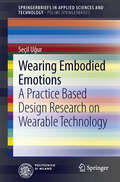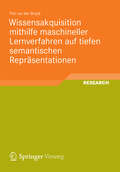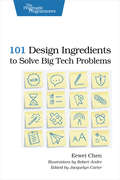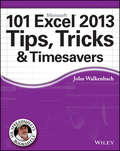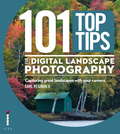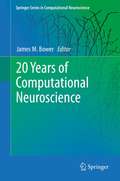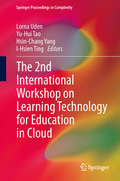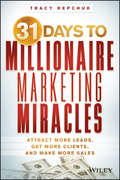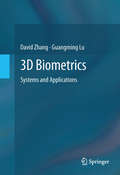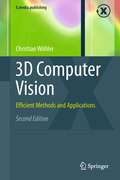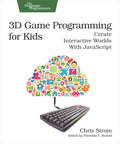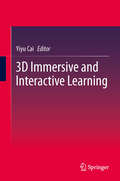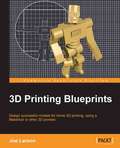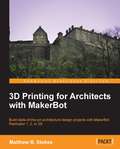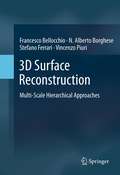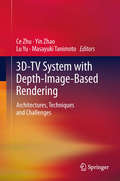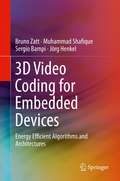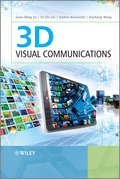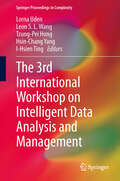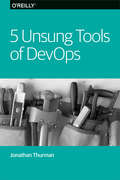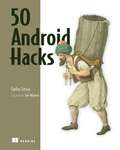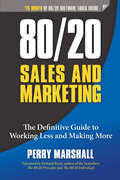- Table View
- List View
Wearing Embodied Emotions
by Seçil UğurToday, people are in an era of digitally mediated Human-to-Human Interaction, which cannot provide full sensorial contact and therefore, emotions cannot be communicated completely. The intimate cover of the human body, i.e. garment is the interface, where many personal traits are embodied. With the improvements in textile and electronics industry, this embodiment can be carried on a higher level, where the garments become dynamic interfaces and extensions of the human body. This book consists of a research on skin, clothes and technology as extensions of human body, emotions, technology-mediated emotions and a design practice that explores the communicative level of wearable technology through turning it into a living surface, which can convert intangible data to tangible in order to provide an emotional communication. This book aims to show how Human-Technology interaction is carried into an alternative context, where technology dissolves in use and starts serving for enhancing HHI.
Wissensakquisition mithilfe maschineller Lernverfahren auf tiefen semantischen Repräsentationen
by Tim vor der BrückEine große Wissensbasis ist eine Voraussetzung für eine Vielzahl von Anwendungen im Bereich der automatischen Sprachverarbeitung, wie Frage-Antwort- oder Information-Retrieval-Systeme. Ein Mensch hat sich das erforderliche Wissen, um Informationen zu suchen oder Fragen zu beantworten, im Laufe seines Lebens angeeignet. Einem Computer muss dieses Wissen explizit mitgeteilt werden. Tim vor der Brück beschreibt einen Ansatz, wie ein Computer dieses Wissen ähnlich wie ein Mensch durch die Lektüre von Texten erwerben kann. Dabei kommen Methoden der Logik und des maschinellen Lernens zum Einsatz.
101 Design Ingredients to Solve Big Tech Problems
by Eewei ChenPrinted in full color.Tough technology and business challenges face you at every stage of a project. The one-page ingredients in 101 Design Ingredients show you how to solve problems using practical examples you can apply right away. Case studies explain how leading companies combined these ingredients into their own unique recipes to catapult their businesses, and how you can, too. One page, one ingredient. 101 reasons to become more successful at solving those big technology problems. 101 Design Ingredients will help your technology team identify problems, share responsibilities, and work better together.In parts 1 through 4, you'll find 101 problem-solving ingredients grouped into project stages, to help you apply the right ingredient at the right time. Start at any point and page through the humorously illustrated ingredients until you find one that matches your needs best. The ingredients cover the spectrum your business needs to be successful, with tips on team-building, creating a business model, product launch, productivity, and much more. Each ingredient includes three practical suggestions to get you started right away.In part 5, you'll see examples of how companies can blend some of the ingredients used in this book to solve specific business requirements for investment, innovation, leadership, and more. Each recipe shows how a company fine-tuned six of the ingredients to build their own unique solution. You'll learn how to mix and match ingredients to create your own recipes for success, tailored to your company's needs.The ingredients and recipes in this book can be applied by beginners starting out on their first technology project, as well as seasoned professionals who have been tackling the same big problems for years and need a fresh new approach to problem solving.
101 Excel 2013 Tips, Tricks and Timesavers
by John WalkenbachGet the most out of Excel 2013 with this exceptional advice from Mr. Spreadsheet himself!Excel 2013 is excellent, but there's lots to learn to truly excel at Excel! In this latest addition to his popular Mr. Spreadsheet's Bookshelf series, John Walkenbach, aka "Mr. Spreadsheet," shares new and exciting ways to accomplish and master all of your spreadsheet tasks. From taming the Ribbon bar to testing and tables, creating custom functions, and overcoming "impossible" charts, mixing nesting limits, and more, 101 Excel 2013 Tips, Tricks, & Timesavers will save you time and help you avoid common spreadsheet stumbling blocks.Reveals ways to maximize the power of Excel to create robust applicationsDraws on John Walkenbach's years of experience using Excel and writing more than 50 booksShares tips and tricks for dealing with function arguments, creating add-ins, using UserForms, working with dynamic chart data, and changing data entry orientationProvides shortcuts and helpful techniques for sorting more than three columns, entering fake data for testing purposes, and setting up powerful pivot tables101 Excel 2013 Tips, Tricks, & Timesavers is packed with information that you need to know in order to confidently and seamlessly master the challenges that come with using Excel!
101 Top Tips for Digital Landscape Photography: Capturing Great Landscapes With Your Camera (101 Top Tips Ser.)
by Carl Heilman IIA comprehensive guide to improving your landscape photography by one of today's foremost landscape photographers.Landscape photography is perhaps the single most popular genre among DSLR owners. In 101 Top Tips for Digital Landscape Photography, experienced professional landscape guru Carl Heilman II gives the benefit of a lifetime spent shooting spectacular wilderness and mountain shots, offering a host of targeted tips and tricks that will allow photographers of all abilities to lift their landscape work to the next level.The reader will learn how to harness natural drama, use difficult lighting situations to your advantage and capture unusual perspectives, all the while benefiting from Carl's clear instruction and beautiful landscape work.
123 of Computer Basics for Visually Impaired using Jaws
by The editors at the EnAble IndiaThis book introduces the basics of computers to Visually Impaired individuals and guides them through the effective ways of using the computers through the Jaws software and emphasizes on all the advantages of using the computer.
123 of Computer Basics for Visually Impaired using NVDA
by The editors at the EnAble IndiaThis book introduces the basics of computers to Visually Impaired individuals and guides them through the effective ways of using the computers through the NVDA software and emphasizes on all the advantages of using the computer as well.
20 Years of Computational Neuroscience (Springer Series in Computational Neuroscience #9)
by James M BowerWhen funding agencies and policy organizations consider the role of modeling and simulation in modern biology, the question is often posed, what has been accomplished ? This book will be organized around a symposium on the 20 year history of the CNS meetings, to be held as part of CNS 2010 in San Antonio Texas in July 2010. The book, like the symposium is intended to summarize progress made in Computational Neuroscience over the last 20 years while also considering current challenges in the field. As described in the table of contents, the chapter's authors have been selected to provide wide coverage of the applications of computational techniques to a broad range of questions and model systems in neuroscience. The proposed book will include several features that establish the history of the field. For each article, its author will select an article originally appearing in a CNS conference proceedings from 15 - 20 years ago. These short (less than 6 page) articles will provide illustrations of the state of the field 20 years ago. The new articles will describe what has been learned about the subject in the following 20 years, and pose specific challenges for the next 20 years. The second historical mechanism will be the reproduction of the first 12 years of posters from the CNS meeting. These posters in and of themselves have become famous in the field (they hang in the halls of the NIH in Bethesda Maryland) and were constructed as allegories for the state and development of computational neuroscience. The posters were designed by the book's editor, who will, for the first time, provide a written description of each poster.
The 2013 Legal Technology Guide Solo and Small Firm
by Sharon D. Nelson John W. Simek Michael C. MaschkeThis annual guide is the only one of its kind written to help solo and small firm lawyers find the best technology for their dollar. You'll find the most current information and recommendations on computers, servers, networking equipment, legal software, printers, security products, smartphones, the iPad and anything else a law office might need. It's written in clear, easily understandable language to make implementation easier if you choose to do it yourself, or you can use it in conjunction with your IT consultant. Either way, you'll learn how to make technology work for you
The 2nd International Workshop on Learning Technology for Education in Cloud
by Lorna Uden I-Hsien Ting Hsin-Chang Yang Yu-Hui TaoProceedings from the 2013 LTEC conference in Kaohsiung, Taiwan. The papers examine diverse aspects of Learning Technology for Education in Cloud environments, including social, technical and infrastructure implications. Also addressed is the question of how cloud computing can be used to design applications to support real time on demand learning using technologies. The workshop proceedings provide opportunities for delegates to discuss the latest research in TEL (Technology Enhanced Learning) and its impacts for learners and institutions, using cloud technologies.
31 Days to Millionaire Marketing Miracles
by Tracy Repchuk31 Days to Millionaire Marketing Miracles is a breakthrough blueprint outlining the proven steps for successfully attracting more leads, getting more clients, and making more sales. Author Tracy Repchuk shows entrepreneurs, business owners, and opportunity-seekers what to do, when to do it, and the order in which it needs to be done to build an online marketing presence that is stable, predictable, and expandable. Whether you want to dominate your market globally or locally, this thirty-one-day guide allows you to take your product, service, or message, and turn it into a moneymaking machine.Best Selling Author Tracy Repchuk is recognized as the Top Woman Speaker in the World for Internet Marketing and an entrepreneur in the IT and internet industry since 1985Serves as a reference guide to newbies and entrepreneurs wanting to turn their passion into profits and accelerate business results31 Days to Millionaire Marketing Miracles guides you along a proven path to profits and shows you an Internet marketing formula that will attract more leads, get more clients, and make more sales
3D Biometrics: Systems and Applications
by David Zhang Guangming LuAutomatic personal authentication using biometric information is becoming more essential in applications of public security, access control, forensics, banking, etc. Many kinds of biometric authentication techniques have been developed based on different biometric characteristics. However, most of the physical biometric recognition techniques are based on two dimensional (2D) images, despite the fact that human characteristics are three dimensional (3D) surfaces. Recently, 3D techniques have been applied to biometric applications such as 3D face, 3D palmprint, 3D fingerprint, and 3D ear recognition. This book introduces four typical 3D imaging methods, and presents some case studies in the field of 3D biometrics. This book also includes many efficient 3D feature extraction, matching, and fusion algorithms. These 3D imaging methods and their applications are given as follows: - Single view imaging with line structured-light: 3D ear identification - Single view imaging with multi-line structured-light: 3D palmprint authentication - Single view imaging using only 3D camera: 3D hand verification - Multi-view imaging: 3D fingerprint recognition 3D Biometrics: Systems and Applications is a comprehensive introduction to both theoretical issues and practical implementation in 3D biometric authentication. It will serve as a textbook or as a useful reference for graduate students and researchers in the fields of computer science, electrical engineering, systems science, and information technology. Researchers and practitioners in industry and R&D laboratories working on security system design, biometrics, immigration, law enforcement, control, and pattern recognition will also find much of interest in this book.
3D Computer Vision: Efficient Methods and Applications (X.media.publishing)
by Christian WöhlerThis indispensable text introduces the foundations of three-dimensional computer vision and describes recent contributions to the field. Fully revised and updated, this much-anticipated new edition reviews a range of triangulation-based methods, including linear and bundle adjustment based approaches to scene reconstruction and camera calibration, stereo vision, point cloud segmentation, and pose estimation of rigid, articulated, and flexible objects. Also covered are intensity-based techniques that evaluate the pixel grey values in the image to infer three-dimensional scene structure, and point spread function based approaches that exploit the effect of the optical system. The text shows how methods which integrate these concepts are able to increase reconstruction accuracy and robustness, describing applications in industrial quality inspection and metrology, human-robot interaction, and remote sensing.
3D Game Programming for Kids: Create Interactive Worlds with JavaScript
by Chris StromPrinted in full color.You know what's even better than playing games? Creating your own. Even if you're an absolute beginner, this book will teach you how to make your own online games with interactive examples. You'll learn programming using nothing more than a browser, and see cool, 3D results as you type. You'll learn real-world programming skills in a real programming language: JavaScript, the language of the web. You'll be amazed at what you can do as you build interactive worlds and fun games.You'll jump right in and write games and simulations while learning programming fundamentals. You'll use the ICE Code Editor, which was created especially for this book to make it easy for you to get started with JavaScript programming. With the ICE Editor, you'll see the results of your work right away. Want a red donut? You can make hundreds of them, spinning around like crazy right next to the code you just typed.You'll do hands-on coding in every chapter. You'll start by building simple animated shapes, then make your own player--who can do cartwheels! You'll learn how to build your own games from start to finish, including a monster eating fruit, a cave puzzle, and rafting on a river. You'll animate simple shapes to create a model of the solar system, and make your own website so that you can show off your games with your friends. If you just want to make games, jump to the lessons focusing on projects. To understand some of the theory better or if you need some help with functions, turn to the chapters that explain the programming concepts. We'll walk you carefully through all the math needed to bring games to life.Best of all, you get to create awesome games and say, "I made this!"
3D Immersive and Interactive Learning
by Yiyu Cai3D technology is not new; research on 3D started back in early 1960s. But unlike in previous times, 3D technology has now rapidly entered our daily life from cinema to office to home. Using 3D for education is a new yet challenging task. This book will present several innovative efforts using 3D for immersive and interactive learning covering a wide spectrum of education including gifted program, normal (technical) stream, and special needs education. The book will also share experience on curriculum-based 3D learning in classroom setting and co-curriculum-based 3D student research projects. The book is organized as follows. Chapter 1 introduces the fundamentals of 3D educational technology and their applications in immersive and interactive learning. Chapter 2 discusses the use of virtual reality in teaching and learning of Molecular Biology. Chapter 3 presents the daVinci Lab @ River Valley High School. Chapter 4 describes the 3D education development process. Chapter 5 studies the adaption 3D system for learning gains in lower secondary normal (technical) stream. Chapter 6 investigates the effects of virtual reality technology on spatial visualization skills. Chapter 7 showcases a sabbatical program for students to use 3D for Science, Technology, Engineering and Mathematics (STEM) learning. Chapter 8 shares the use of 3D virtual pink dolphin to assist special education. The foreword of this book is written by Dr Cheah Horn Mun, Director, Education Technology Division, Ministry of Education, Singapore.
3D Printing Blueprints
by Joe Larson"3D Printing Blueprints" is not about how to just make a ball or a cup. It includes fun-to-make and engaging projects. Readers don't need to be 3D printing experts, as there are examples related to stuff people would enjoy making. "3D Printing Blueprints" is for anyone with an interest in the 3D printing revolution and the slightest bit of computer skills. Whether you own a 3D printer or not you can design for them. All it takes is Blender, a free 3D modeling tool. Couple this book with a little creativity and someday you'll be able to hold something you designed on the computer in your hands.
3D Printing for Architects with MakerBot
by Matthew B. StokesThis is a hands-on tutorial for a user to become well-versed with 3D printing using MakerBots."3D Printing for Architects with MakerBot" is ideal for architects looking to creating stunning prototypes using the MakerBot Replicator 2X 3D printer. Having experience using 3D CAD software is beneficial but not necessary as this book mentions several different CAD packages for beginners, up to those more advanced users who are perhaps looking for additional features.
3D Surface Reconstruction: Multi-Scale Hierarchical Approaches
by Vincenzo Piuri Francesco Bellocchio N. Alberto Borghese Stefano Ferrari3D Surface Reconstruction: Multi-Scale Hierarchical Approaches presents methods to model 3D objects in an incremental way so as to capture more finer details at each step. The configuration of the model parameters, the rationale and solutions are described and discussed in detail so the reader has a strong understanding of the methodology. Modeling starts from data captured by 3D digitizers and makes the process even more clear and engaging. Innovative approaches, based on two popular machine learning paradigms, namely Radial Basis Functions and the Support Vector Machines, are also introduced. These paradigms are innovatively extended to a multi-scale incremental structure, based on a hierarchical scheme. The resulting approaches allow readers to achieve high accuracy with limited computational complexity, and makes the approaches appropriate for online, real-time operation. Applications can be found in any domain in which regression is required. 3D Surface Reconstruction: Multi-Scale Hierarchical Approaches is designed as a secondary text book or reference for advanced-level students and researchers in computer science. This book also targets practitioners working in computer vision or machine learning related fields.
3D-TV System with Depth-Image-Based Rendering: Architectures, Techniques and Challenges
by Masayuki Tanimoto Ce Zhu Lu Yu Yin ZhaoRiding on the success of 3D cinema blockbusters and advances in stereoscopic display technology, 3D video applications have gathered momentum in recent years. 3D-TV System with Depth-Image-Based Rendering: Architectures, Techniques and Challenges surveys depth-image-based 3D-TV systems, which are expected to be put into applications in the near future. Depth-image-based rendering (DIBR) significantly enhances the 3D visual experience compared to stereoscopic systems currently in use. DIBR techniques make it possible to generate additional viewpoints using 3D warping techniques to adjust the perceived depth of stereoscopic videos and provide for auto-stereoscopic displays that do not require glasses for viewing the 3D image. The material includes a technical review and literature survey of components and complete systems, solutions for technical issues, and implementation of prototypes. The book is organized into four sections: System Overview, Content Generation, Data Compression and Transmission, and 3D Visualization and Quality Assessment. This book will benefit researchers, developers, engineers, and innovators, as well as advanced undergraduate and graduate students working in relevant areas.
3D Video Coding for Embedded Devices: Energy Efficient Algorithms and Architectures
by Jörg Henkel Muhammad Shafique Sergio Bampi Bruno ZattThis book shows readers how to develop energy-efficient algorithms and hardware architectures to enable high-definition 3D video coding on resource-constrained embedded devices. Users of the Multiview Video Coding (MVC) standard face the challenge of exploiting its 3D video-specific coding tools for increasing compression efficiency at the cost of increasing computational complexity and, consequently, the energy consumption. This book enables readers to reduce the multiview video coding energy consumption through jointly considering the algorithmic and architectural levels. Coverage includes an introduction to 3D videos and an extensive discussion of the current state-of-the-art of 3D video coding, as well as energy-efficient algorithms for 3D video coding and energy-efficient hardware architecture for 3D video coding.
3D Visual Communications
by Yu-Chi Lai Haohong Wang Guan-Ming Su Andres KwasinskiProvides coverage of the major theories and technologies involved in the lifecycle of 3D video content deliveryPresenting the technologies used in end-to-end 3D video communication systems, this reference covers 3D graphics and video coding, content creation and display, and communications and networking. It covers the full range of key areas from the fundamentals of 3D visual representation to the latest 3D video coding techniques, relevant communication infrastructure and networks to the 3D quality of experience.The book is structured to logically lead readers through the topic, starting with generic and fundamental information, continuing with a detailed section of different visualisation techniques before concluding with an extensive view of 3D mobile communication systems and trends. The authors give most focus to four important areas: 3D video coding and communications; 3D graphics/gaming and mobile communications; end-to-end 3D ecosystem (including 3D display, 3D player, networking facility and 3D quality issues), and future communications and networks advances for emerging 3D experience.Presents the theory and key concepts behind the latest 3D visual coding framework, standards, and corresponding quality assessmentProvides fundamental material which forms the basis for future research on enhancing the performance of 3D visual communications over current and future wireless networksCovers important topics including: 3D video coding and communications; 3D graphics/gaming and mobile communications; end-to-end 3D ecosystem; and future communications and networks advances for emerging 3D experienceEssential reading for engineers involved in the research, design and development of 3D visual coding and 3D visual transmission systems and technologies, as well as academic and industrial researchers.
The 3rd International Workshop on Intelligent Data Analysis and Management
by Leon S.L. Wang Tzung-Pei Hong Lorna Uden I-Hsien Ting Hsin-Chang YangThese papers on Intelligent Data Analysis and Management (IDAM) examine issues related to the research and applications of Artificial Intelligence techniques in data analysis and management across a variety of disciplines. The papers derive from the 2013 IDAM conference in Kaohsiung ,Taiwan. It is an interdisciplinary research field involving academic researchers in information technologies, computer science, public policy, bioinformatics, medical informatics, and social and behavior studies, etc. The techniques studied include (but are not limited to): data visualization, data pre-processing, data engineering, database mining techniques, tools and applications, evolutionary algorithms, machine learning, neural nets, fuzzy logic, statistical pattern recognition, knowledge filtering, and post-processing, etc.
5 Unsung Tools of DevOps
by Jonathan ThurmanThe tools we use play a critical role in how effective we are. In today's ever-changing world of technology, we tend to focus on the latest and greatest solutions and overlook the simple tools that are available. Constant improvement of tools is an important aspect of the DevOps movement, but improvement doesn't always warrant replacement. The tools presented in 5 Unsung Tools of DevOps provide insight into or control over a DevOps environment--and they require minimal installation and configuration. They're not the flashiest tools, but they're time tested and just work.
50 Android Hacks
by Carlos SessaSummaryThe best programming techniques are often the shortest and simplest—the hacks. In this compact and infinitely useful book, Android expert Carlos Sessa delivers 50 hacks that will save you time, stretch your skills, and maybe even make you smile.About this BookHacks. Clever programming techniques to solve thorny little problems. Ten lines of code that save you two days of work. The little gems you learn from the old guy in the next cube or from the geniuses on Stack Overflow. That's just what you'll find in this compact and useful book.The name 50 Android Hacks says it all. Ranging from the mundane to the spectacular, each self-contained, fully illustrated hack is just a couple of pages long and includes annotated source code. These practical techniques are organized into twelve collections covering layout, animations, patterns, and more.What's InsideHack 3 Creating a custom ViewGroupHack 8 Slideshow using the Ken Burns effectHack 20 The Model-View-Presenter patternHack 23 The SyncAdapter patternHack 31 Aspect-oriented programming in AndroidHack 34 Using Scala inside AndroidHack 43 Batching database operationsPlus 43 more hacks!Most hacks work with Android 2.x and greater. Version-specific hacks are clearly marked.Purchase of the print book includes a free eBook in PDF, Kindle, and ePub formats from Manning Publications.About the AuthorCarlos Sessa is a passionate professional Android developer. He's active on Stack Overflow and is an avid hack collector.Table of ContentsWorking your way around layoutsCreating cool animationsView tips and tricksToolsPatternsWorking with lists and adaptersUseful librariesInteracting with other languagesReady-to-use snippetsBeyond database basicsAvoiding fragmentationBuilding tools
80/20 Sales and Marketing
by Richard Koch Perry MarshallGuided by famed marketing consultant and best-selling author Perry Marshall, sales and marketing professionals save 80 percent of their time and money by zeroing in on the right 20 percent of their market - then apply 80/202 and 80/203 to gain 10X, even 100X the success. With a powerful 80/20 software tool (online, included with the book), sellers and marketers uncover how to slash time-wasters; advertise to hyper-responsive buyers and avoid tire-kickers; gain coveted positions on search engines; differentiate themselves from competitors and gain esteem in their marketplace. With the included tools they'll see exactly how much money they're leaving on the table, and how to put it back in their pockets. Sellers will identify untapped markets, high-profit opportunities and incremental improvements, gaining time and greater profit potential. Supported by online tools from Marshall, including The 80/20 Power Curve, a tool that helps you see invisible money, and a Marketing DNA Test, a personal assessment that zeroes in on one's natural selling assets, this timeless guide promises to change the game for seasoned and novice marketers and sellers.
